E-Archive
Cover Page
in Vol. 11 - November Issue - Year 2010
Japanese Ship Builder Moves Surface Preparation And Protective Coating Application Inside To Reduce Pollution And Save Costs
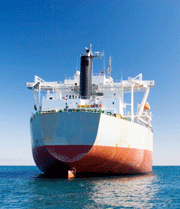
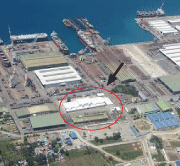
Asia
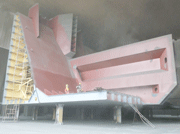
Ship block under blasting process

The dehumidifier system is integrated into the Blastechnik TDF ventilation dust collector. A variety of dehumidifying modes are selectable depending on the requirement.
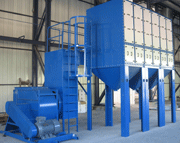
High efficiency Blastechnik TDF ventilation dust collector ensures correct amount of air changes per hour are achieved within the blasting chamber
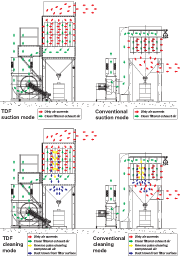
The above graphic illustrates the difference between a conventional cartridge type dust collector and Blastechnik TDF dust collector. By inverting the filter cartridges the air flow through the dust collector and the dust pulsed from the filter cartridges travel in the same direction. This results in the filters remaining free of dust.
One of the world’s largest ship builders of bulk cargo vessels completed installation and commissioning of Asia’s largest blasting and painting facilities in October 2010. Comprising six combination blasting and painting chambers each measuring 35m long x 25m wide x 17m high the facility was fully designed, supplied and installed by Blastechnik Pte Ltd.
Traditionally the blasting and painting of ship block sections has been conducted in the open air in ship yard dock sides using expendable abrasives and open spray painting. Obviously there are many draw backs to this process. Firstly the production rate is always unstable as the blasting and painting process is always at the mercy of the weather. During periods of inclement weather it is impossible to blast or paint due to rain and high humidity levels. In tropical regions this can be a major problem as the rainy season can last for weeks and bring production to a standstill. The other issue is with environmental pollution. Blasting with expendable abrasives or unconfined spray painting releases large amounts of polluting chemicals, dusts and pollutants into the environment.
With increasingly strict environmental regulations, and with the introduction of new IMO regulations for production of double skin hull vessels, the requirements for surface preparation and protective coating application have changed. Aside from the above regulations and pollution issues open blast and painting is not the best way to achieve productivity and quality work.
With the introduction of the Blastechnik Pte Ltd range of ship block combination blasting and painting facilities it is more economical than ever to move surface preparation and painting operations inside into an environmentally friendly climate controlled atmosphere where blasting and painting can be conducted around the clock 365 days a year without being at the mercy of the weather or producing vast amounts of pollution. Blasting and painting inside a climate controlled facility will result in higher productivity, higher quality work and substantial cost savings.
Another key advantage and cost saving benefit of moving the blasting process to inside a blasting chamber is the choice of abrasive that is able to be used. Instead of using thousands of tonnes of expendable abrasives, and consequentially having thousands of tonnes of waste to dispose of, the blasting abrasive of choice is now steel grit. With the correct recycling equipment this abrasive is able to be recycled hundreds of times. As the abrasive is so durable, the breakdown rate is extremely low (?0.5kg/m2), resulting in a fraction of the waste being generated and needing to be disposed of when compared to expendable abrasives. In order to achieve this a high efficiency recycling system is required to ensure all oversize waste and scrap, and all dust and degraded abrasive is removed from good reusable abrasive each time the steel grit is recycled.
The Japanese shipyard concerned with this installation was very concerned about capital expenditure and in their previous experience had noted that a lot of installed equipment sits around idle and unused for a lot of the time. This is because seldom is blasting or painting required at the same time in 2 adjoining chambers. As there are three main processes involved, abrasive blasting, clean up and spray painting it is more common to find two adjoining chambers performing different functions at the same time, ie as clean up is being performed in chamber A chamber B is being used for blasting; or as painting is being performed in chamber A chamber B is undergoing clean up, and so on. Given this fact it then becomes obvious it is a waste of capital investment to fit one set of blasting/ventilation/abrasive recovery/dehumidification equipment onto every chamber as for at least half the time the equipment will sit idle. In order to solve this Blastechnik devised a unique shared equipment room concept. Instead of supplying 6 machinery rooms, one for each chamber, only 3 machinery rooms were supplied, one for every two chambers. Each machinery room is then fitted with one set of blasting ventilation, abrasive blasting, abrasive recovery and dehumidification equipment. Through a series of diverter valves, inter-connecting ducting and volume control dampeners either blast chamber may be selected for blasting, abrasive recovery or spray painting. Selection of which chamber to use for which process is via PLC control panels.
One of the major issues that arises during the processing of ship block sections, or other very large steel fabrications, is the problem of flash rusting of the part after blasting and prior to painting. This is a serious problem in areas of high relative humidity. Due to the very size of the components being blasted it can take many hours or even days to fully blast the ship block prior to the application of the primer coating. After blasting the part also has to be thoroughly cleaned of abrasive and dust, a process which can also take many hours to perform. In areas of high relative humidity this can cause the freshly blasted steel surface to flash rust prior to the application of the first layer of paint. Once the steel has started to rust it no longer meets the quality standard required for painting and will require reblasting, a big waste of resources.
The relative humidity level of the air surrounding the part determines how fast the part will corrode. Higher relative humidity levels produce faster corrosion rates. Lower relative humidity levels will extend the time taken for the part to start to rust.
Compounding this problem is the presence of dust. Surfaces containing dust will start to corrode faster than clean surfaces. As dust is hygroscopic it will draw moisture from the surrounding air and onto the freshly blasted surface. Abrasive blasting is an inherently dusty process so it is inevitable the surface will contain a certain amount of dust which will increase the corrosion rate of the steel.
During the processing of ship blocks and other large steel fabrications it is vital to slow down this corrosion rate in order to allow enough time to apply the first coating after completing blasting. In order to achieve this, the Blastechnik blasting facilities are fitted with high efficiency combination ventilation and humidity control equipment. The Blastechnik blastroom is able to maintain relative humidity levels at 50% RH during blasting and clean up. With a relative humidity level of just 50% RH the risk of flash rusting is almost completely eliminated, providing ample time between blasting and painting. During spray painting the relative humidity level is maintained at 75% RH. Most painting specifications require spray painting to be carried out with a relative humidity level no greater than 80-85% RH.
This facility, as well as all other blasting facilities supplied by Blastechnik Pte Ltd is fitted with Blastechnik TDF ventilation dust collectors, designed and built specifically for blasting applications. Unlike conventional cartridge type dust collectors, in which the dust is falling down into an incoming upflow air stream, the TDF design is the total opposite. The incoming air flow is from the top of the collector and the filter cartridges are pulsed clean directly into the outlet collection hopper. This unique feature greatly increases the filter cleaning efficiency and prevents the filter cartridges becoming clogged with dust. This results in the dust collector providing constant performance and extends the life of the filter cartridges. The high efficiency performance of the Blastechnik TDF ventilation dust collector ensures that the correct air changes per hour are maintained within the blasting chamber.
In order to achieve high productivity and blasting and painting through put rates it is essential that all blasted abrasive is removed from the ship block as quickly as possible. Due to the containerised shape of ship block sections huge quantities of blasted abrasive end up inside the block after blasting. The most effective way to remove this is with high capacity vacuum pumps. The Blastechnik abrasive recovery vacuum is capable of recovering 6-10MT of steel grit per hour. The heart of the unit is the German manufactured positive displacement vacuum pump which provides high vacuum recovery rates but minimal electrical power requirements.
Blastechnik Pte Ltd is a company specialising in the design and manufacture of blastrooms for specific applications. Other blastrooms in our range include dual abrasive blastrooms for blasting carbon and stainless steel components in the same blastroom using steel grit and glass beads abrasives. The recovery system of this blastroom is capable of separating the two abrasives to a separation efficiency level of 99.99%.
Full floor recovery portable blastrooms permit the blastroom to be brought to the work piece rather than bring the work piece to the blastroom. Very convenient for shipyard, refinery and construction site work.
We also produce blastrooms specifically for use with plastic media, garnet, aluminium oxide and other specific abrasives.
For Information:
Blastechnik Pte Ltd
Blk 3016, Bedok North Avenue 4
#03-25, EASTech, Singapore 489947
Tel. +65.6505.9098
Fax +65.6245.8785
E-mail: sales@theblastroom.com
www.theblastroom.com



























